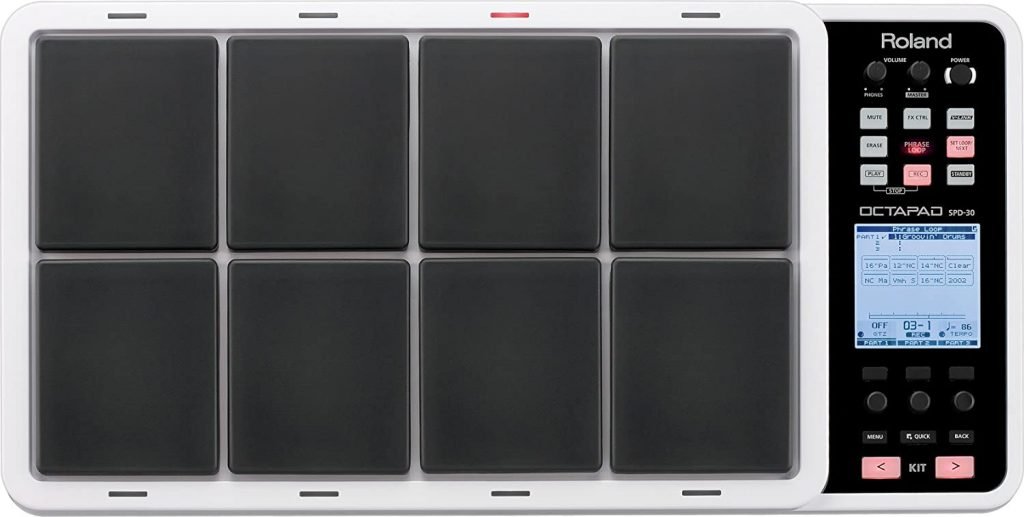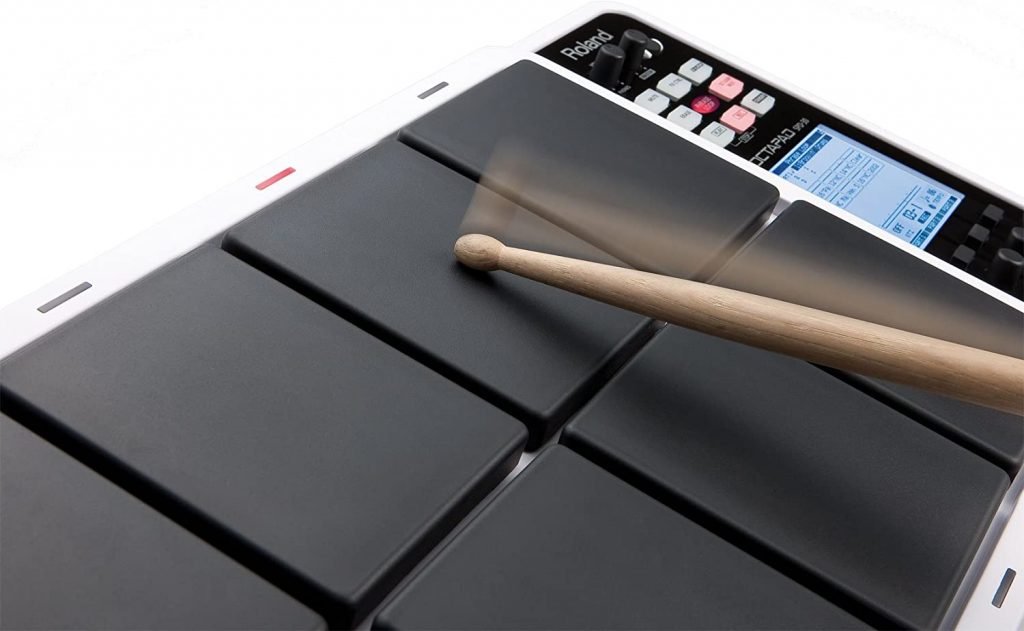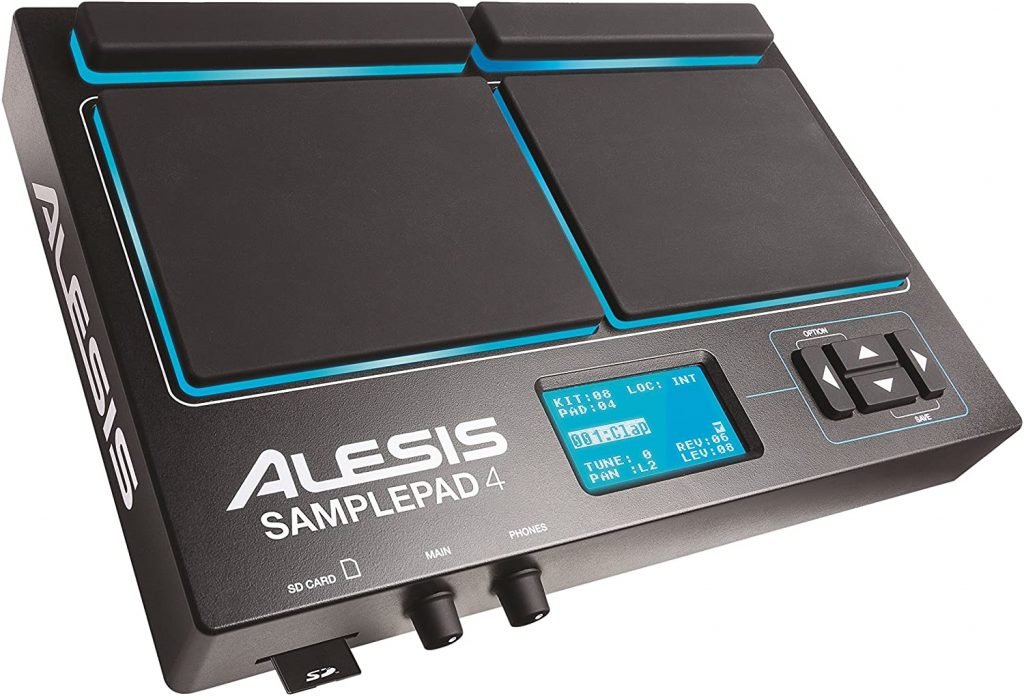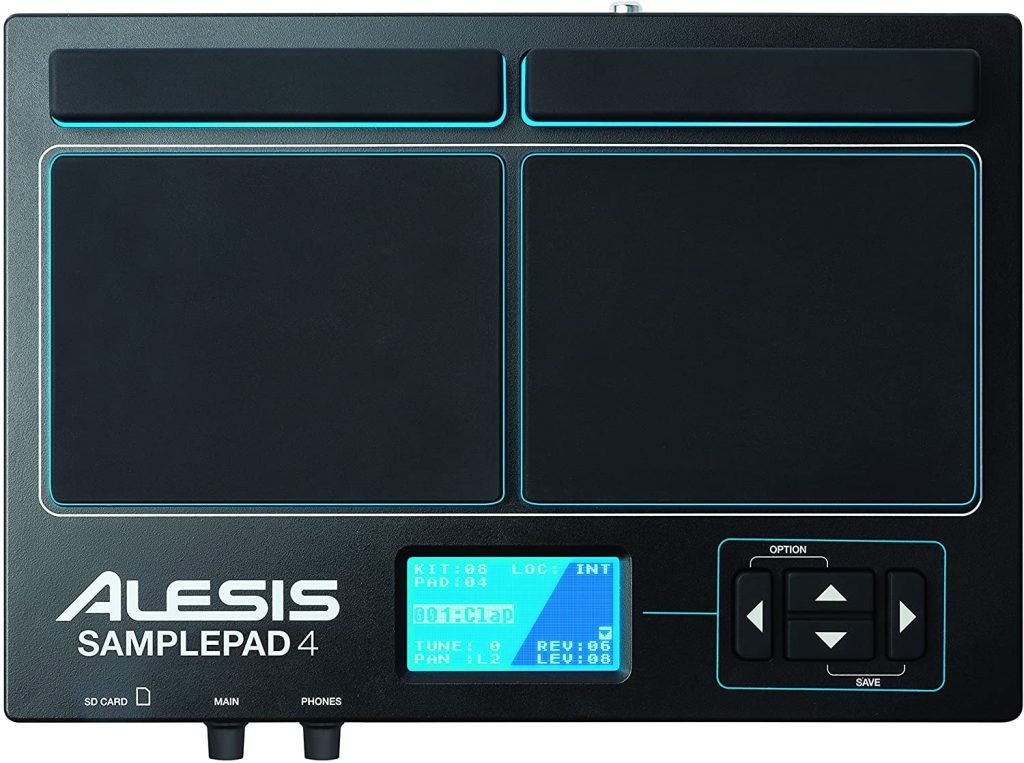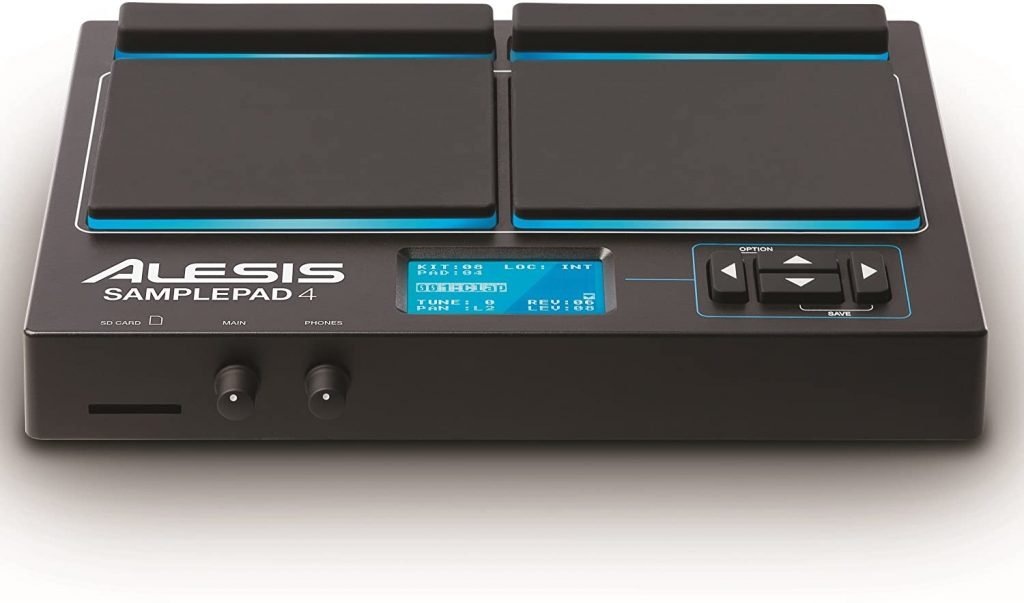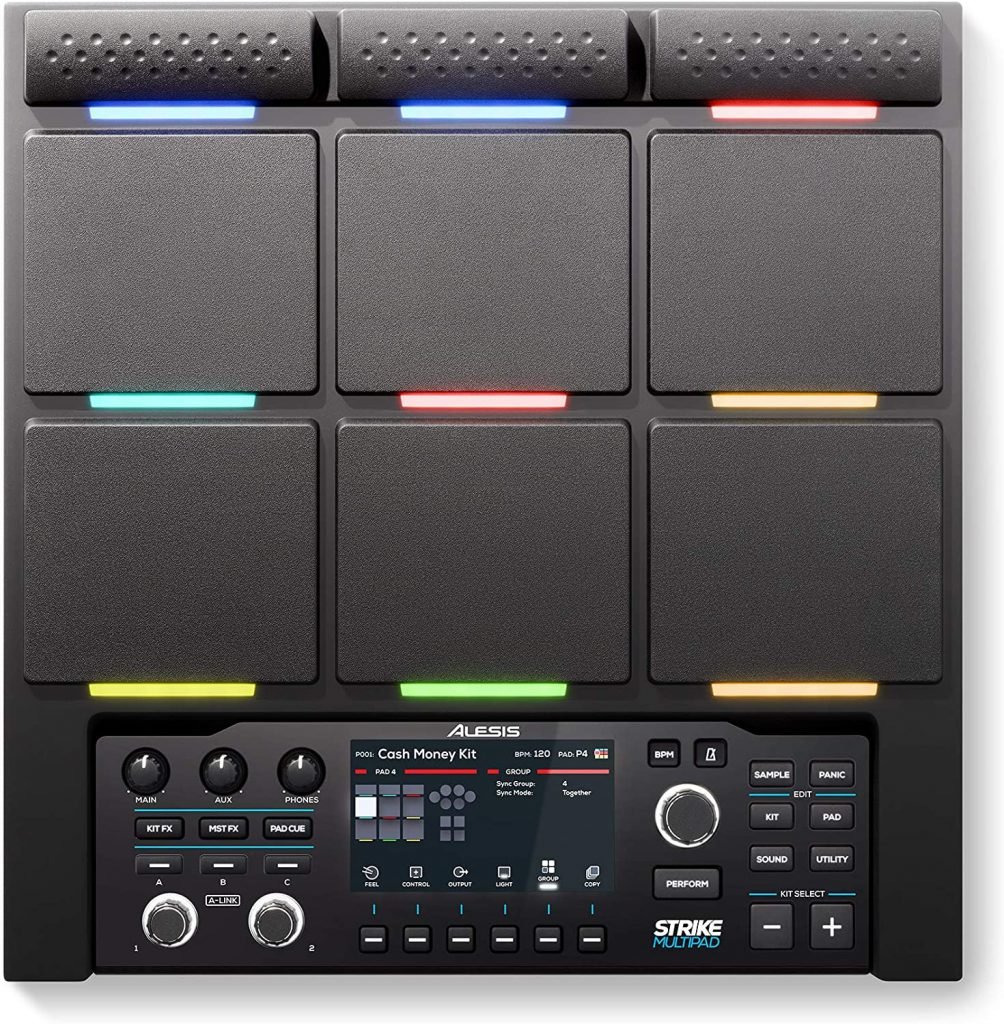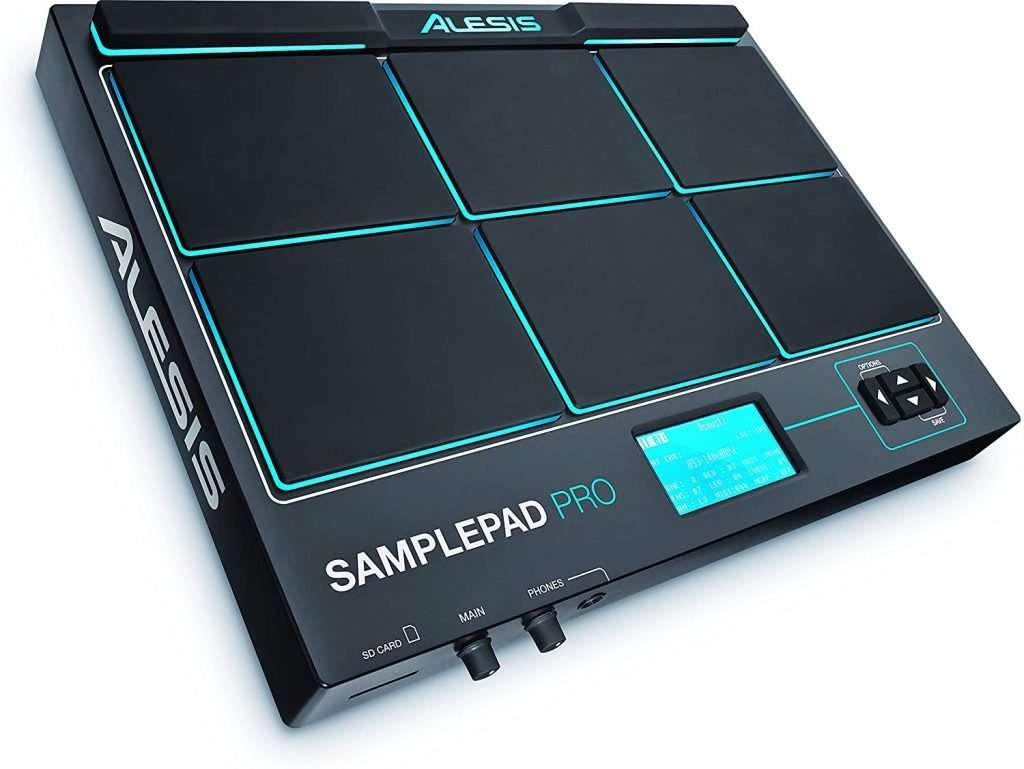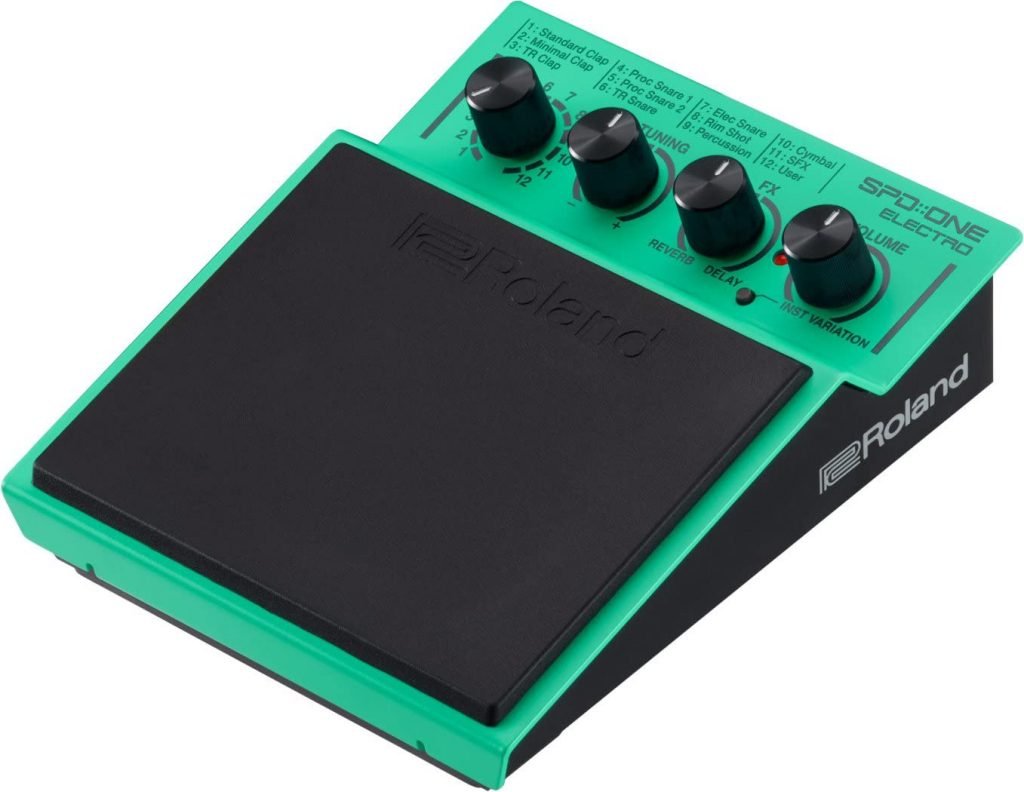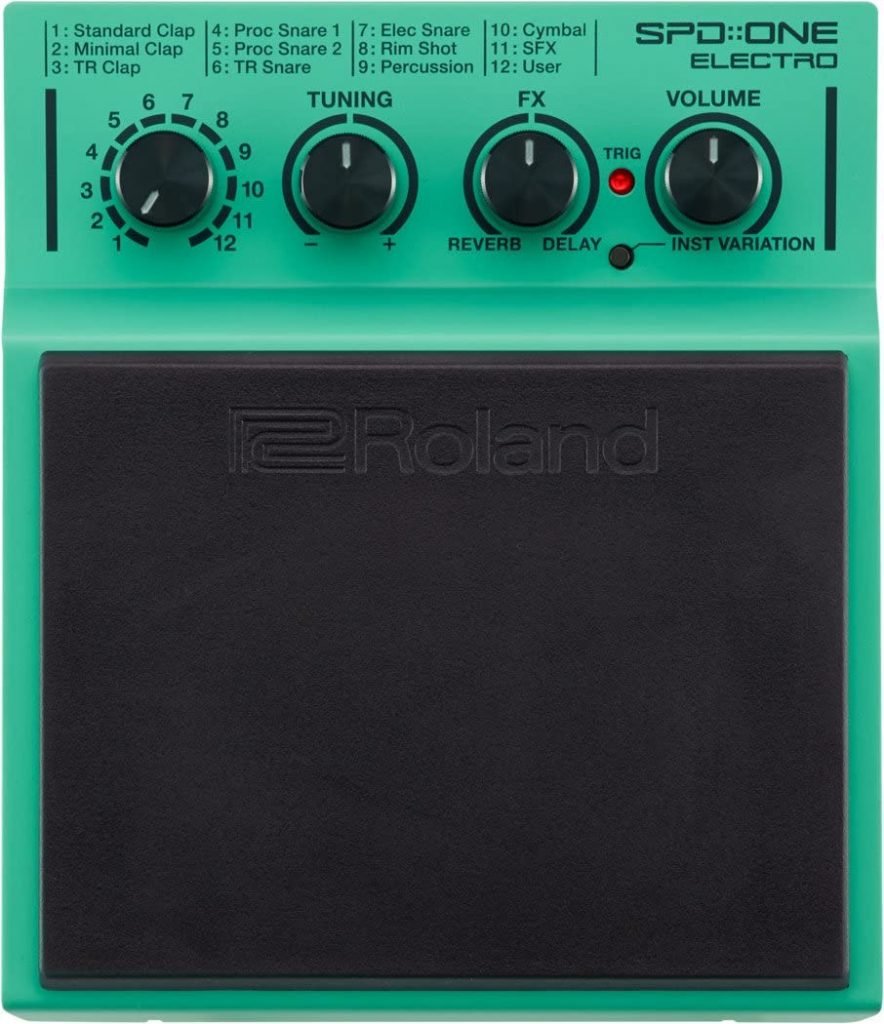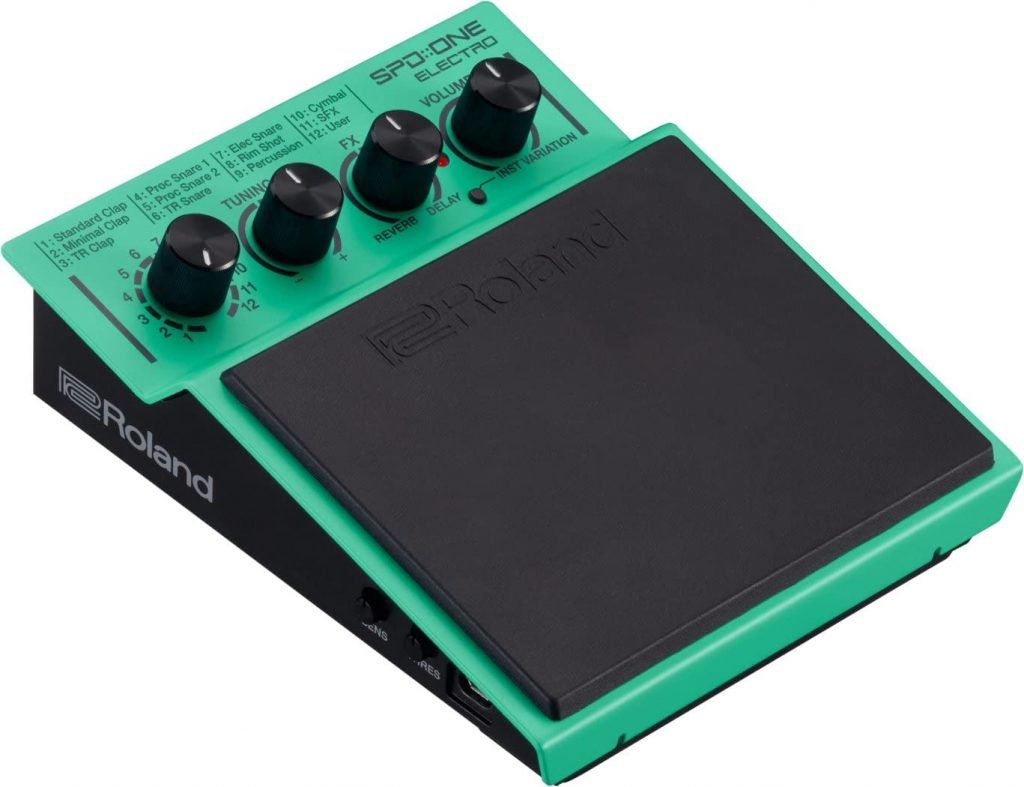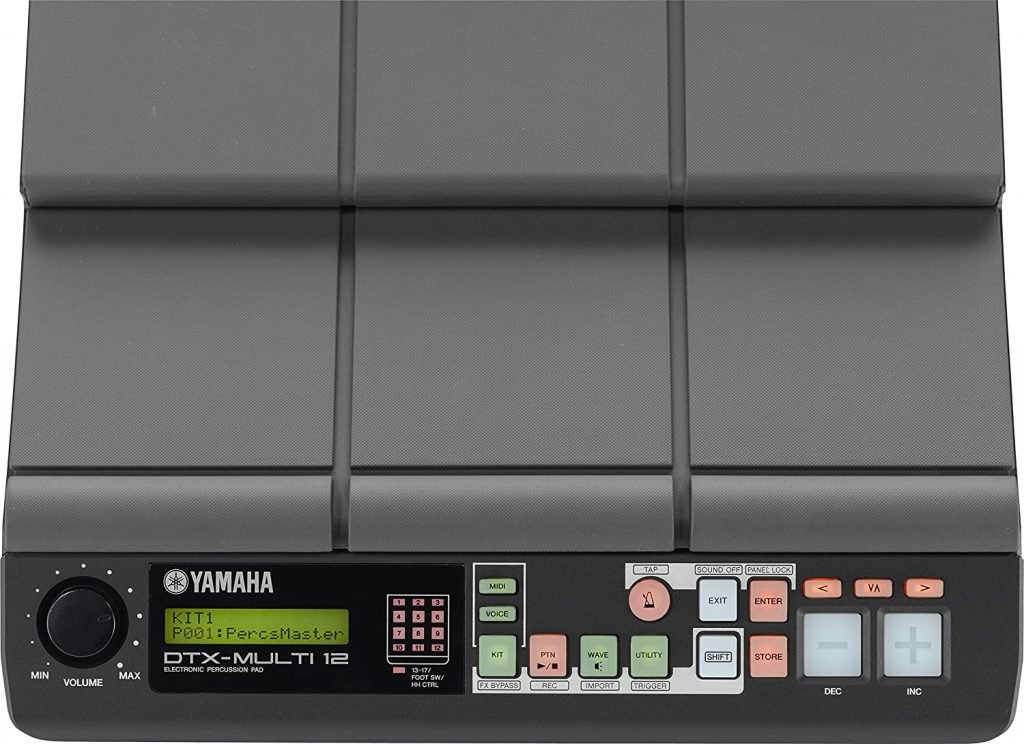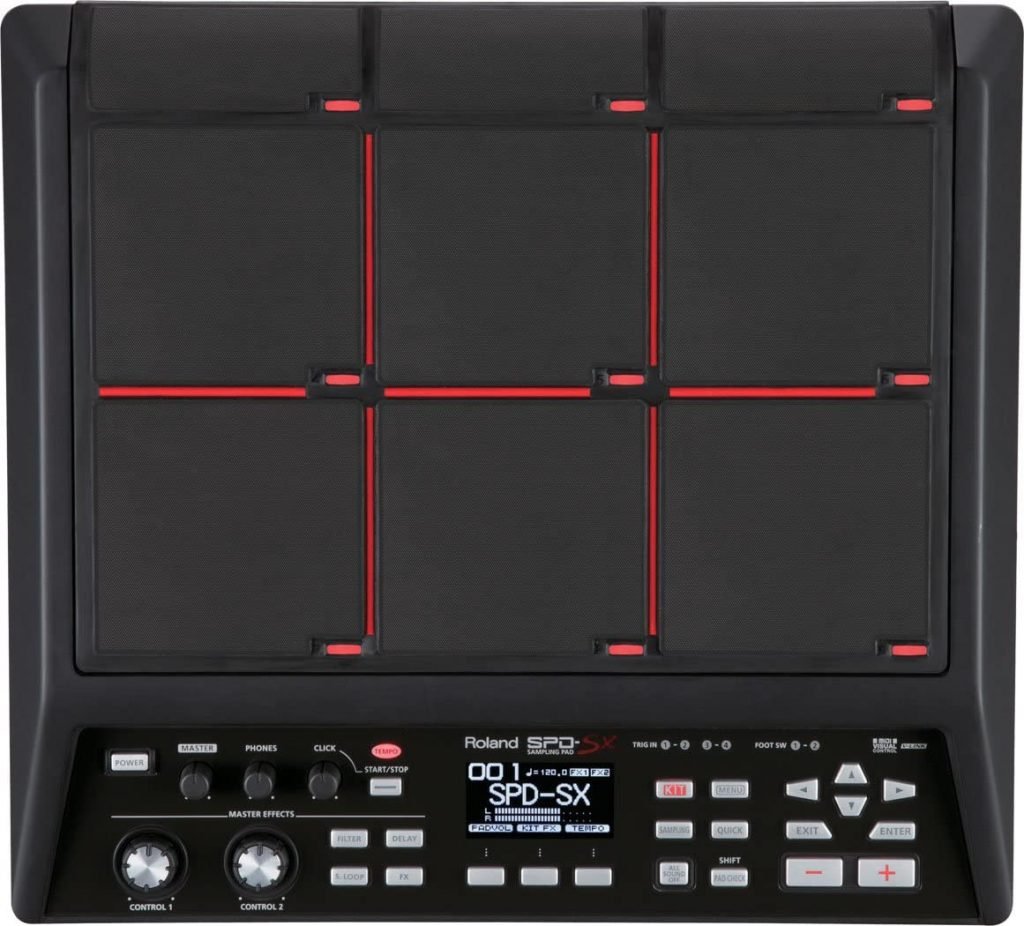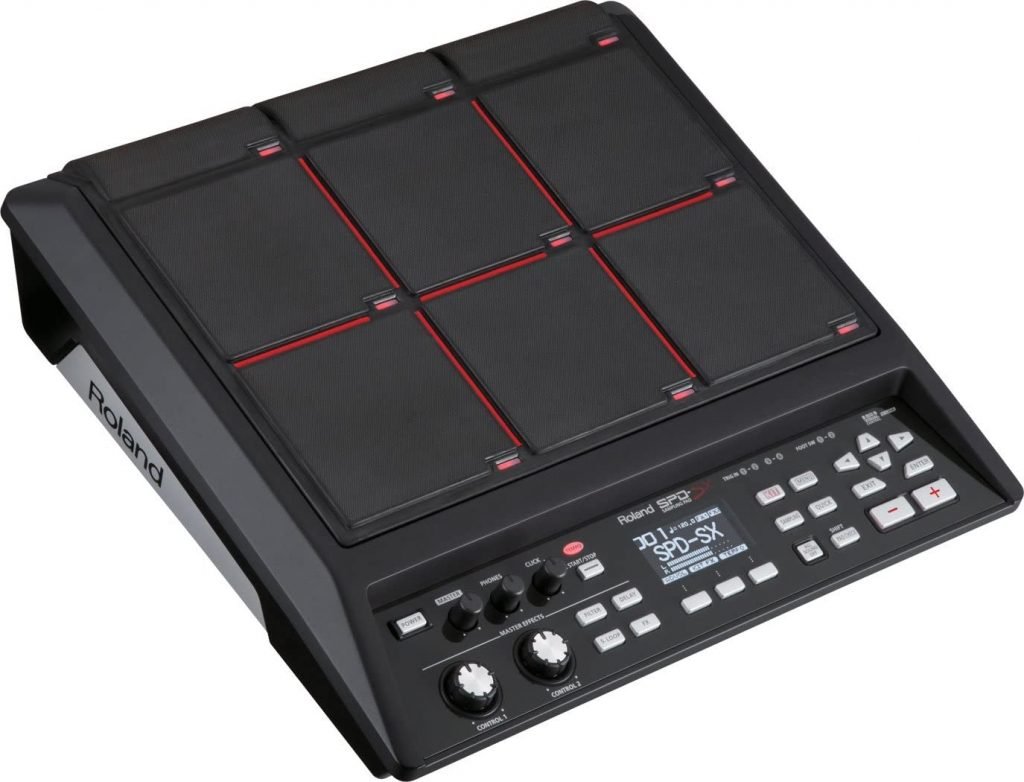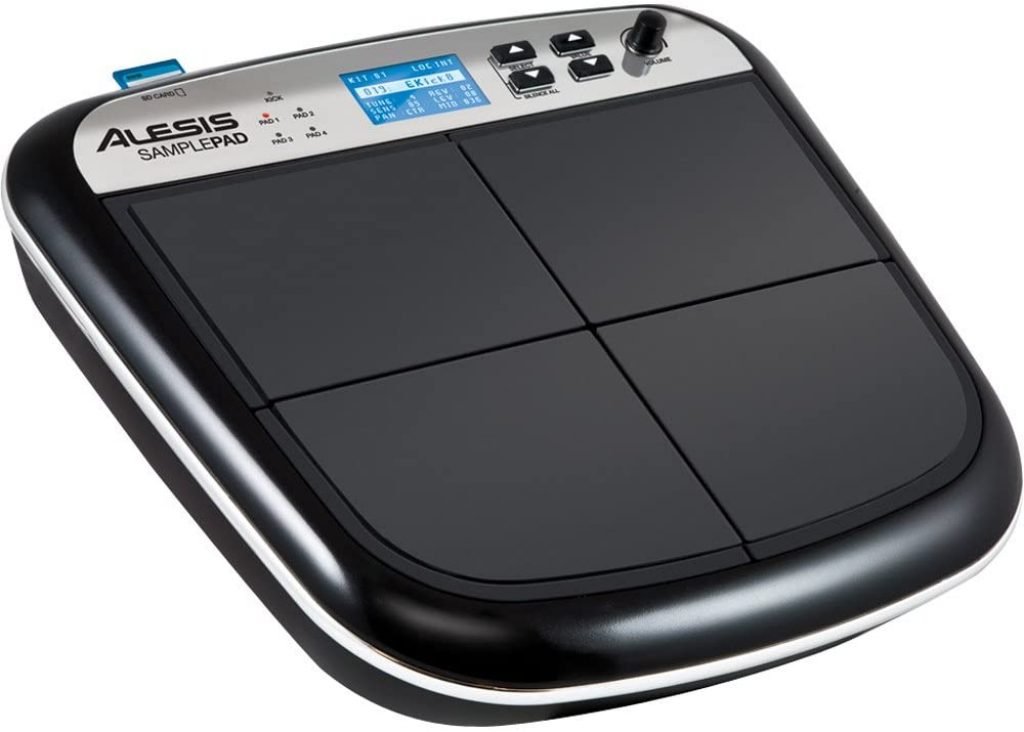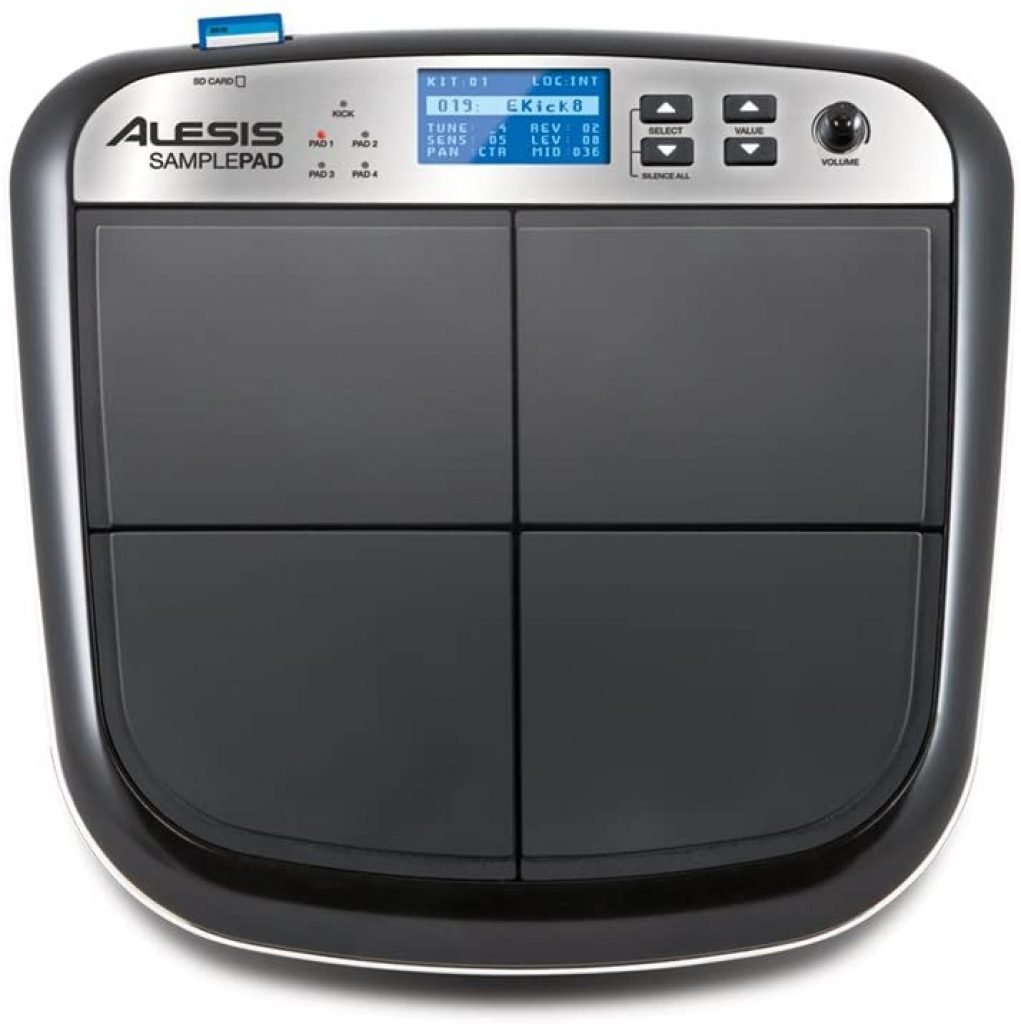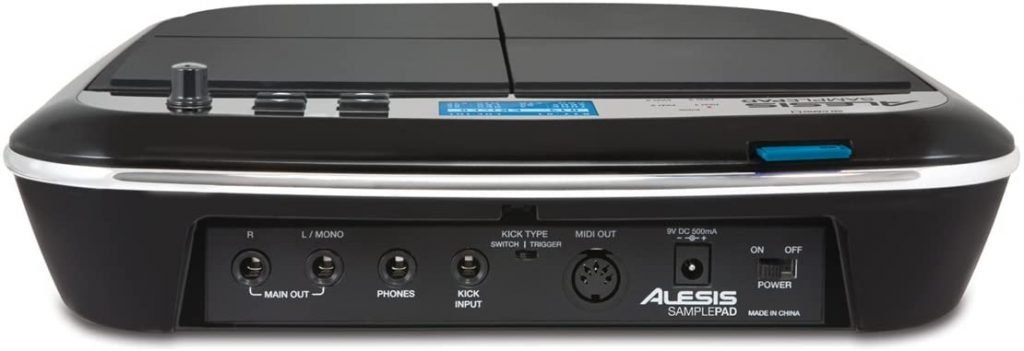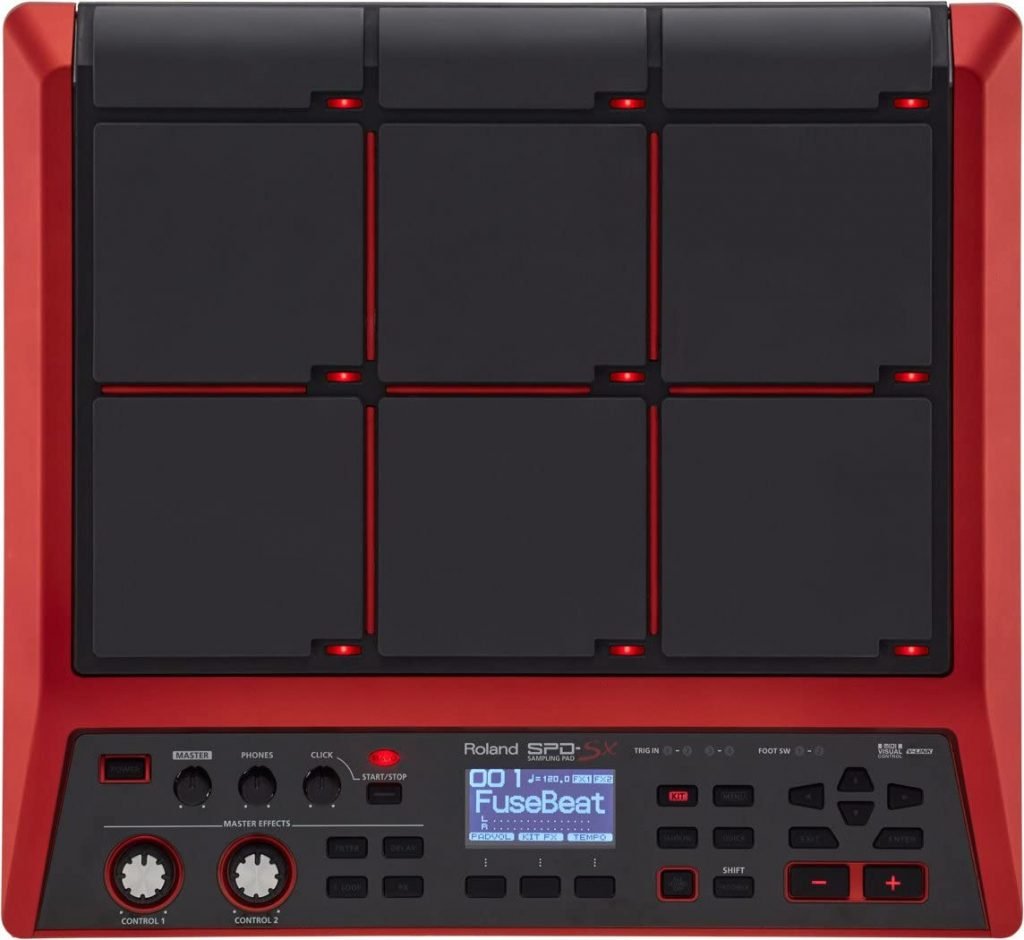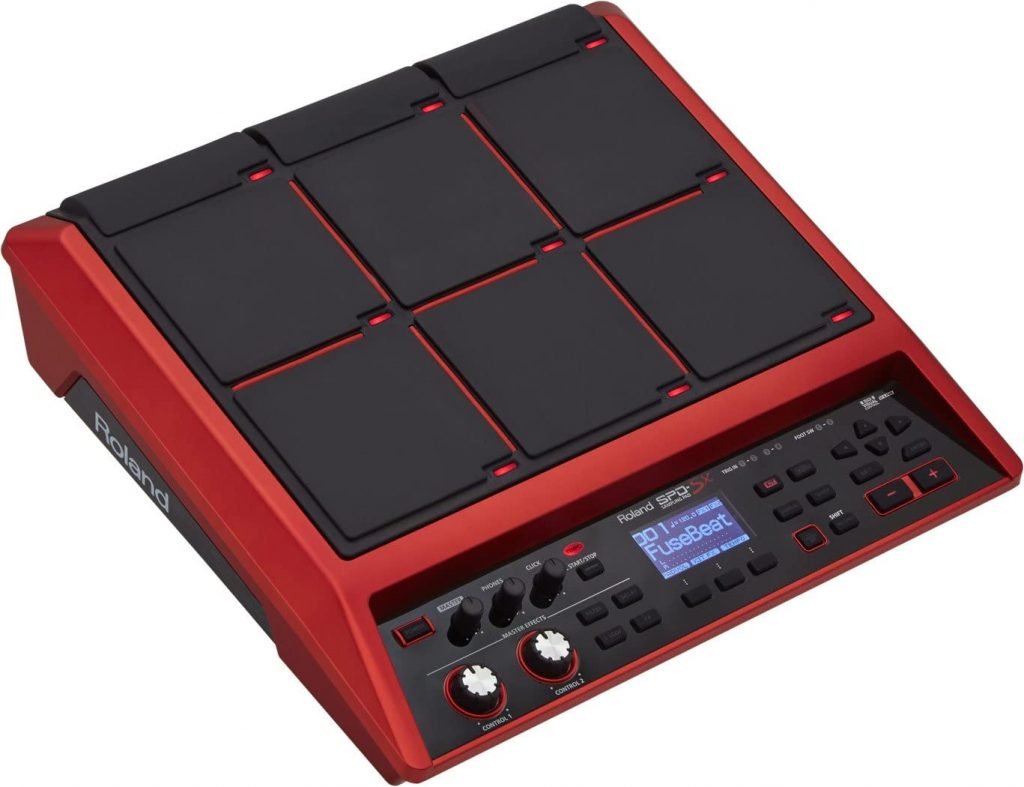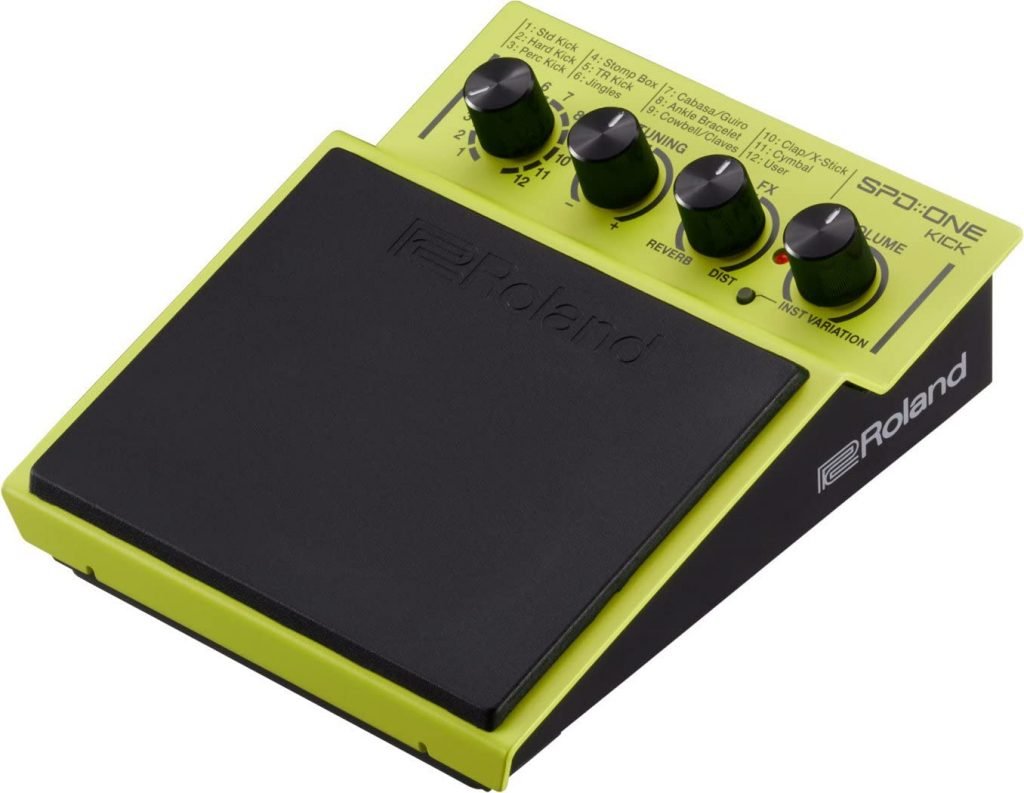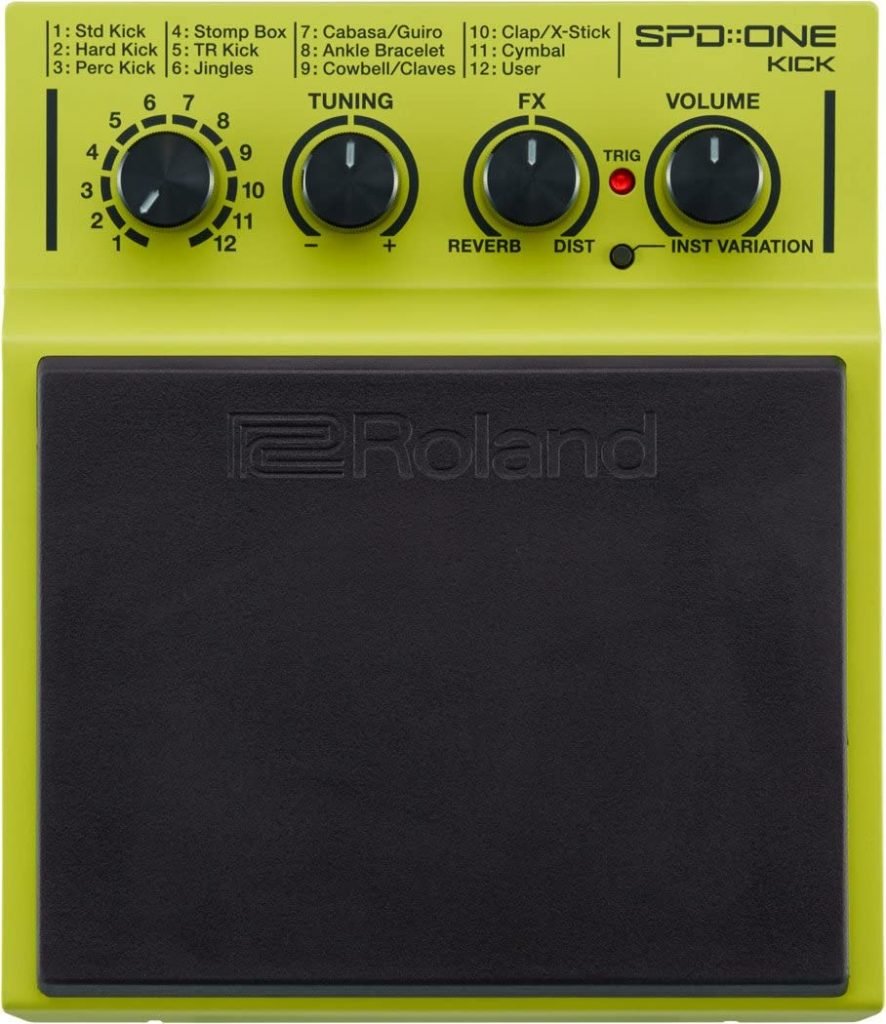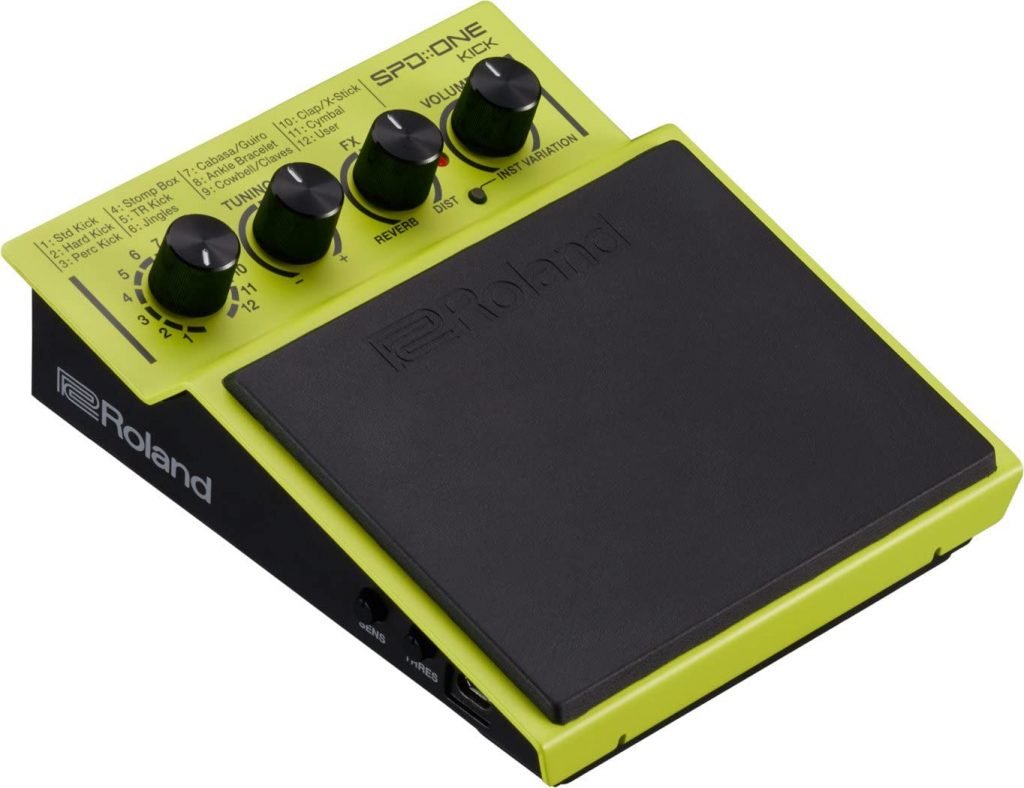Best Electronic Drum Pad – Make Electronic Music Live Again
While drum machines are meant to automatize drum tracks for electronic or live music, the best drum pads are, on the contrary, here to bring live style into it. With large pads on the surface (hence the name), they are playable with hands or sticks, and being velocity sensible lets them deliver your drumming style. No wonder they are popular among DJs and producers as well as live bands. EDM and hip-hop, pop, and rock music have incorporated drum pads as great tools for production and gigs.
Given how many great models are around, choosing the best electronic drum pad is quite a job. Well, Roland OCTAPAD is probably the best versatile one. As an electronic instrument, it maintains that branded style from cult drum machines TR-808 and its followers. At the same time, it shares the V-Drum sensitivity that makes V-Drums by Roland the best electronic drum kit nowadays. Still, other options are also worth a look: they may be better suited for studio work, have more sampling abilities, be easier to use with acoustic drum kits, or just be cheaper. So each electric drum pad I have selected has its pros and its fans.
10 Best Electronic Drum Pads Reviewed
Contents
What should a good electronic percussion pad offer? First of all, that’s the pads, easy to play with hands or sticks, with decent sensitivity, so your force defines the velocity. It should provide flexibility in terms of sound, with many available samples you can load from outer sources or record with the device itself, easily choose, edit, and play right on it. Finally, a built-in sequencer is a must. As a drum machine repeats the pattern you have just created or loaded, you play live over it. Given that these samples can contain entire riffs, a drum machine enhances DJ gear, as well as it does an acoustic drum kit.
So, let’s see what’s in store. And we start with the one I’d recommend to everyone interested in the ultimate drum pad, with all it takes to make perfect beats.
1. Roland OCTAPAD SPD-30: Best Electronic Drum Pad
When you say “electronic drums”, you probably mean Roland. The Japanese company excels at both electrifying drum kits and making revolutionary drum machines. OCTAPAD SPD-30 has the best of both worlds. Based on the original PAD 8 of 1985 (the one adored by many drummers, including Phil Collins), it’s another classic reinvented, like TR-08 is to TR-808 or TB-03 to TB-303.
The first thing you see is eight pads you can hit with sticks or fingers. The pads are force-sensible; due to the same technologies the company uses in its V-Drum sets, you affect the velocity of the sample by regulating the force you apply. At the same time, they are well isolated from each other, so hitting one won’t trigger another. If eight are not enough, you can connect four more with specialized inputs.
As for the effects section (the feature Roland has always been great at), it lets you choose the ambiance, apply the EQ and the limiter, as well as other effects. More than that: you can pre-record or pre-program loops and switch from the kit mode to loop mode – that is, from live drumming to a sort of drum machine. The firmware comes with 99 kits, plus you can create and load your own.
It’s quite a standalone instrument; you can play live and record up to three layers to compose sophisticated sequences. At the same time, it can be used as a MIDI controller for desktop software. The USB input also lets you load new samples.
No products found.
Specifications:
- Dimensions (L+W+H): 27.31 x 54.1 x 8.89 cm
- Weight: 3.8 kg
- Pads: 8 x Velocity-sensitive Pads
- Kits: 99 Kits, 8 x Kit Chain Orders
- Sounds: 670 instruments
- Analog Inputs: 1 x 1/4″ (mix in)
- Analog Outputs: 2 x 1/4″ (main out)
- Headphones: 1 x 1/4″
- Trigger Inputs: 4 x 1/4″ (single triggers), 1 x 1/4″ (hi-hat control)
- MIDI I/O: In/Out/USB
- USB: 1 x Type A, 1 x Type B
- Pedal Inputs: 1 x 1/4″
- Memory: Store up to 50 phrases, 3 parts
- Effects: Ambience, EQ, Limiter, Multi-effects (30 x types)
- Power Source: Roland power adapter (included)
What’s included:
- Roland OCTAPAD SPD-30
- Great sensitive pads;
- Built-in recorder;
- Kit and loop modes;
- Compatible with external pads and pedals;
- Rugged build and overall quality.
- Too sophisticated for beginners;
- Not enough outputs for some cases;
- No PC or Mac software is included.
2. Alesis Sample Pad 4: Budget Electronic Drum Pad for Beginners
While you have probably seen and heard monitors by Alesis, this American vendor makes a wide range of musical instruments and equipment, the best drum pad being not the most prominent, but an essential part of it. Best Sample Pad 4 is another drum pad in a long line of similar devices, progressing with minor updates.
Having just four pads and one audio output, it’s especially great as an enhancement to a live drum kit. It lets the drummer embed new sounds that otherwise would require more various instruments. Connecting external triggers lets the musician use more samples and apply effects. Simple as it is, the pad has enough high-quality samples and lets you load more from an SD card.
Not that I would praise this one for DJ-ing or emulating the full drumkit: it’s not made for this job. As an enhancement, though, it works great, given its moderate price. I’d also recommend it as the best among electronic drum pads for starters, to understand the very idea of a drum pad and practice the manner.
No products found.
Specifications:
- Dimensions (L+W+H): 19.05 x 26.04 x 6.35 cm
- Weight: 1.1 kg
- Pads: 4
- Analog Inputs: 1 x 1/4″ TRS (dual trigger in)
- Analog Outputs: 1 x 1/4″ TRS (headphones), 2 x 1/4″ (left, right)
- MIDI I/O: USB
- Expansion: SD/SDHC card drive, 1 x USB Type B
What’s included:
- Alesis Sample Pad 4
- A great enhancement for a drum kit;
- Quality samples built-in;
- Unusual construction;
- External triggers supported;
- Budget-friendly.
- Not quite good as a standalone tool;
- No MIDI out;
- The layout may seem too unusual.
3. Alesis Strike Multipad: Premium Drum Sound Pad
Along with simple ones like SamplePad 4, Alesis makes advanced drum pads like Strike Multipad. It seems even more powerful than Octapad SPD-30; at least, it has one pad more, though these nine are different, with six full-size ones and three smaller ones, like in SamplePad 4.
Nine pads are accompanied by multiple inputs and outputs that let you form an entire set around this controller. Connect pedals to play hats and kicks like you are used to. Connect extra pads if nine sounds at a time are too few (given many thousands of preloaded samples only, no wonder if you want to access more within one kit). Connect a mic to record and process external sounds and then play these samples.
If you prefer computers, well, the device can be used as a MIDI-over-USB controller and an audio interface simultaneously when connected to a PC or Mac. It makes even more sense as it comes with Ableton Live Lite and Pro Tools First. Its price is only slightly above that of the Octapad SPD-30, but for those who prefer Alesis’s vibes over Roland’s, this one will be of more use.
No products found.
Specifications:
- Dimensions (L+W+H): 36.07 x 35.05 x 8.89 cm
- Weight: 3.5 kg
- Pads: 9 x Velocity-sensitive RGB Pads
- Kits: 30 Presets, 70 User
- Sounds: 6GB pre-loaded Samples and Loops (8,000 sounds)
- Analog Inputs: 2 x 1/4″ (record in)
- Analog Outputs: 2 x 1/4″ (main out), 2 x 1/4″ (aux out)
- Headphones: 1 x 1/8″, 1 x 1/4″
- Trigger Inputs: 2 x 1/4″ (dual zone), 1 x 1/4″ (single zone), 1 x 1/4″ (Hi-hat)
- MIDI I/O: In, Out/Thru, USB
- USB: 1 x Type A, 1 x Type B (2 x 2 audio)
- Pedal Inputs: 2 x 1/4″ (foot control)
- Formats: WAV files
- Memory: 32GB internal storage
- Sampler: Sampler, Loop Recorder
- Effects: 27 x Kit FX, 38 x Master FX, Compression/EQ
- Software: Ableton Live Lite
- Power Source: 9V DC 1500mA power supply (included)
What’s included:
- Alesis Strike Multipad
- Nine great pads;
- Lots of effects and filters;
- Rich input and output selection;
- Sample recording and editing;
- Great display;
- Comes with professional software.
- Rather expensive;
- Some prefer Roland’s approach.
4. Alesis Sample Pad Pro: Great Value Electric Drum Pad
Designed as both an enhancement and a replacement for a full-size drum kit, Alesis Sample Pad Pro looks a bit like Strike Multipad, with the same pad layout, except for one smaller pad ditched for a big logo. The effects section, though, rather resembles Sample Pad 4, with its smaller display and no buttons but four arrows.
It would be just appropriate to view it as an advanced version of the Sample Pad line, with some extra functionality. Along with more pads, it includes separate inputs for the footswitch and hi-hat, standard MIDI input and output, an AUX input, and still a large library of samples.
The device you get is much more of a standalone instrument. You can play sophisticated patterns on it, record your patterns, export them as MIDI, use the device as a MIDI controller for computers, connect more pads and pedals – and, yes, use it to enhance your drum kit if you need to. For the given price, it’s not that expensive.
No products found.
Specifications:
- Dimensions (L+W+H): 5.79 x 28.35 x 38.1 cm
- Weight: 2.9 kg
- Pads: 8 x Velocity-sensitive Blue LED Pads
- Kits: 10
- Sounds: Over 200
- Analog Inputs: 1 x 1/8″ (aux in)
- Analog Outputs: 2 x 1/4″ (main out)
- Headphones: 1 x 1/4″
- Trigger Inputs: 2 x 1/4″ (pads 1/2), 1 x 1/4″ (kick), 1 x 1/4″ (hi-hat)
- MIDI I/O: In/Out/USB
- USB: 1 x Type B
- Pedal Inputs: 1 x 1/4″ (footswitch)
- Expansion: SD/SDHC card slot (up to 32GB)
- Formats: 16-bit WAV
- Power Source: 9V DC power supply (included)
What’s included:
- Alesis Sample Pad Pro
- 6 full-size pads and 2 narrow ones;
- A great set of inputs and outputs;
- Expandability;
- MIDI connectivity;
- Great sound quality.
- Not so sturdily built as its rivals;
- Crosstalk between pads.
5. Roland SPD-1E: Great Electronic Drum Pad for Acoustic Drums
While this pad seems too limited (it’s literally a pad, not a set of them), with four knobs for choosing the sound and applying effects, it’s a way more powerful tool than it seems. Select the sound, then play it with sticks or with your hands, or even with your foot – the build is sturdy enough for that. The surface is large enough for an expressive manner, and the sensibility and the threshold are adjustable.
The variety of built-in sounds reflects the classics by Roland, familiar with iconic drum machines. After you have chosen the sound, you can play it as well as play with it. Add delay, filters, reverb, and other effects that can be found in various versions.
This is the Electro version, with drum samples used in electro music. There are also Kick, Percussion, and WavePad, at the approximately equal price range. The difference between them is in built-in effects and filters, but the physical feel remains. Hardly is there a need to have all four real drum kit enhancements (for that price, you can buy an SPD-30 as well). However, one can be a great addition to a drum kit, being battery-operated and requiring no cables but audio output.
No products found.
Specifications:
- Dimensions (L+W+H): 26.04 x 22.86 x 10.8 cm
- Weight: 907 g
- Pads: 1
- Sounds: 22 – 808, 909, snares, cymbals, cowbell, claps, and more
- Presets: 22 factories, 12 user sound banks
- Analog Outputs: 1 x 1/4″ (mono out), 1 x 1/4″ (headphones)
- MIDI I/O: USB
- USB: 1 x Type Micro-B
- Formats: WAV files (16-bit, 44.1 kHz)
- Memory: 4GB (360 minutes of stereo audio)
- Effects: Reverb, Delay
- Power Source: 9V DC power supply (sold separately) / 4 x AA batteries
What’s included:
- Roland SPD-1E
- Simple to use;
- Great sensibility and playability;
- Sturdy build;
- Iconic sounds built-in;
- Available in various versions.
- No MIDI output;
- Cannot load external sounds.
6. Yamaha DTX-Multi 12: A Sampler Disguised as a Drum Synth Pad
Another Japanese brand, a long-time rival of Roland, comes with its ultimate 12-pad layout, a bit similar to that used by Alesis. The central rows of pads are full-size, while the closest and the furthest are narrow, though quite playable. If 12 are not enough, you can connect a kick and a hi-hat footswitch and up to 5 external pads. The rubber pads are sturdy enough for playing with sticks and sensible enough for playing with hands.
This one can be used with a drum kit, but you’d rather want it to be a drum kit. No wonder: 12 pads, each of which can have up to four sample layers, with various effects on each of these samples, is quite a powerful thing. As for the samples, there are thousands of them already in, and you can add your own kits and samples.
Yes, it means you can load synths, guitars, piano, sax samples, even voice samples – whatever – and play them like they are drums. The instrument overtly invites you to experiment, having a decent set of onboard keyboard samples.
No products found.
Specifications:
- Dimensions (L+W+H): 41.9 x 55.6 x 24.5 cm
- Weight: 3.2 kg
- Pads: 12
- Kits: 50 Presets, 200 User
- Sounds: 1,061 Voices, 216 Keyboard
- Polyphony: 64 Notes
- Analog Inputs: 1 x 1/4″ (aux in)
- Analog Outputs: 2 x 1/4″ (main)
- Headphones: 1 x 1/4″
- Trigger Inputs: 1 x 1/4″ (3-zone) , 2 x 1/4″ (14-17 mono)
- MIDI I/O: In/Out
- USB: 1 x Type A, 1 x Type B
- Pedal Inputs: 1 x 1/4″ (footswitch), 1 x 1/4″ (Hi-hat control)
- Formats: WAV, AIFF
- Memory: 100MB wave memory
- Effects: 6 x Chorus, 6 x Reverb, 5-band EQ
- Power Source: 12V DC power supply (included)
What’s included:
- Yamaha DTX-Multi 12
- 12 pads plus inputs for more;
- Sturdy and built for sticks or hands;
- Built-in samples and effects;
- Supports playing various samples;
- Comes with Cubase AI;
- Decent price.
- Counter-intuitive layout;
- A MIDI controller rather than a living instrument.
7. Roland SPD-SX 4 GB Edition: Most Self-Sufficient Drum Pad
This instrument combines an advanced sampler and a drum pad. In short: record any sound you like, edit it right on the device, load it as a sample, and play it with your hands or drumsticks. You can record what’s going on with audio inputs and use them to route it with output as well.
Of course, this one functions as a regular drum pad. But using it as such still is overkill. Connect it to a PC to use as a MIDI controller. Sync with other MIDI devices or record tracks of what you play, either audio or MIDI. Use a flash drive to expand your memory if 4 GB is not enough. Apply effects in real-time with knobs and switches.
No matter if you’re a drummer, a producer, or a DJ, you will make good use of it.
No products found.
Specifications:
- Dimensions (L+W+H): 34.62 x 36.53 x 9.53 cm
- Weight: 2.7 kg
- Pads: 9 x Velocity-sensitive Pads
- Kits: 100
- Polyphony: 20 voices
- Analog Inputs: 2 x 1/4″ (audio in)
- Analog Outputs: 2 x 1/4″ (sub out), 2 x 1/4″ (master out)
- Headphones: 1 x 1/4″
- Trigger Inputs: 2 x 1/4″ TRS (trigger 1-4 in)
- MIDI I/O: In/Out/USB
- USB: 1 x Type A, 1 x Type B
- Pedal Inputs: 1 x 1/4″ (footswitch)
- Formats: 16-bit WAV, AIFF
- Memory: 4GB internal
- Sampler: 360-minute stereo sampling time, 16-bit/44.1kHz
- Effects: 21 x Master effects, 20 x Kit effects, EQ
- Software: Wave Manager
- Power Source: 9V DC power supply (included)
What’s included:
- Roland SPD-SX 4
- Great durable pads;
- Rich effects section;
- Multiple inputs and outputs;
- Rich sound banks;
- Extra pads connectable;
- Sampling and recording features.
- Still quite expensive;
- Too feature-packed for many drummers.
8. Alesis Sample Pad: Digital Percussion Pad with Good Sound Banks
Though it looks like kitchen equipment, it’s a solid 4-section pad that has onboard sounds and lets you load external ones. It’s a great addition to an acoustic drum kit, with sensible pads and a sturdy build. Too small as a standalone one, it can be expanded with an external best percussion pad. For studio use or expanding your acoustic drum set, you can load external samples and play them as well as built-in ones. It’s the layout that makes Alesis Sample Pad different from the rivals; let your hands do the choosing when hesitating, and if they choose this one — do as they say.
Of course, you cannot expect pattern mode, a built-in recorder, or even pedal support from this cheap item. Available at a pocket-friendly price and often discounted, it’s a good entry-level model for a beginner. You can use it with preinstalled samples, as they sound very decent.
No products found.
- Great pads;
- Good for playing with hands or sticks;
- Allows for loading custom samples;
- Easy to master even for beginners.
- Simple;
- Does not support footswitches;
- My memory is limited.
9. Roland SPD-SX Special Edition: Now with 16 GB!
It’s the SPD-SX we have reviewed before, the only difference being that this version comes with 16 GB of onboard memory. This enables the device to keep larger libraries of samples and records on board, thus making it more valuable as a standalone tool. In addition, due to expanded memory, the device will have a longer lifespan, remaining up-to-date with new firmware when it’s updated.
This model is preferable to the standard edition for those who record a lot or play long and high-quality samples live. The layout and the sensibility of the pads are basically the same, except for the limited edition comes in more aggressive red and black. It will surely show in your promo videos and photos.
No products found.
- A sampler and a drum pad in one;
- Powerful as a MIDI controller;
- 16 GB onboard memory;
- Spectacular design;
- Will have longer support than the 4GB.
- More expensive than Standard;
- You get most of it with the Standard edition.
10. Roland SPD-1K: A Drum Pad to Replace Your Kick Drum
It’s also a version of one already reviewed drum pad – but the difference is that this one has a built-in bank of kick drum samples, along with ethnic percussion, hi-hats, and inevitable cowbell. Unlike the previously mentioned SPD-1E, this one also has a built-in distortion effect instead of delay. The engineers decided it would make more sense with kicks, and it adds some aggressive tones. Besides that, it’s an almost exact copy of SPD-1E.
If you decide to use both at the same time, you won’t be confused because of the color differentiation. The Electro version is green, while the Kick version is greenish-yellow. The same applies to other versions: the Percussion version is white, and the WAV Pad is red.
No products found.
- Easily playable;
- Great for feet, hands, or sticks;
- Natural effects;
- Affordable;
- Works with other Roland SPDs.
- Only one-shot mode;
- Only built-in sounds;
- No MIDI.
Buyers’ Guide on the Best Electronic Drum Pad
After reading all these electronic drum pad reviews, you may still be choosing yours, as all of those above seem great in their own right. So, let’s restart with the basics.
What are electronic drum pads used for?
Electronic drum pads are electronic musical instruments that let you play any music (mostly drum patterns) with a drumming technique. This device recognizes and interprets signals that you generate by hitting it, so you hear hits as if you hit the real drum. More advanced ones let you apply the drumming manner to any sound, from keys to voice samples.
Some of them are used to enhance an acoustic or electronic drum set. Then these pads are installed as regular drums, and the drummer just gets another surface to hit, being able to choose the sound it produces.
Other electronic drum pads are used in a DJ’s manner. They can replay patterns like drum machines, and you can play live upon the record. They are equipped with hardware sample editors, effect generators, and stuff. MIDI outputs allow for syncing various devices, and with a USB port, you can connect it to a computer, load new samples, update the firmware, or use the pad as a MIDI controller.
How to choose a good electronic drum pad?
First of all, you need to select the best vendors. I am a fan of Roland and Alesis, so they dominate on this top. But there are also ones by Yamaha and other top vendors that also deserved their place on the list. Cheap Chinese electronic drums may be good as training devices but not for professional use.
Second, the best drum sample pad is the one adequate for your modus operandi. If you are a DJ, you use a lot of samples, and record live gigs, you need to care about sample functionality, a good screen, LED lights for pads and buttons, and connectivity.
Live drummers, who search for a drum pad to enhance their kits, should look at playability and physical properties primarily. The perfect drum pad is the one that fits into the kit and really adds some features to the soundscape. It does not need a built-in sample editor (though it would have been nice). Even support of custom samples is not that necessary. As Phil Collins said about the first drum machines Roland, it was their imperfectness that differentiated them from real drums, so they made sense. Many drummers benefitted from the same effect since then. But to enjoy it in full, you should make sure its size, layout, and sensibility fit your existing manner, so you don’t have to alter it too much.
Finally, pay attention to little details that need to work smoothly for you. Do you think you will ever need extra pads, pedals, or hi-hat inputs? Better have them than lack. Think you may ever need more samples than there are in the banks? Learn how to load them. These little things, though, are to be considered when you have already chosen two or three candidates and now are to select the best one among them.
P.S. Do you really think one electronic drum pad will always be enough?
FAQ About Electronic Drum Pads
Guess you must be aware of the specs of electronic drum pads (otherwise, you wouldn’t have got them here). There are still some questions to answer about the very concept.
Are electronic drum pads any good?
The same was questioned about drum machines, and now they are considered the key element of modern pop music. As for drum pads, they are an advanced version of these, combining automation and live playing. Yes, digital drum pads are great tools if you know how to use them.
However, they can’t replace an acoustic kit: they do a different job. Nevertheless, if you are short of space, they can do you right, though providing a different feel. Luckily, the technique does not have to be changed too much.
Do professional drummers use electronic drums?
Yes, they do, because sometimes there is a need to add extra sounds that require very different instruments. Electronic drums allow for loading various samples and apply almost the same technique a drummer uses on acoustic ones. It’s not necessary to give up classical drums: an electronic pad can enhance the kit. They are also irreplaceable when you’re tight on space. Of course, serious drummers will prefer full-size electronic kits, like Roland V-Drums. Or at least they say so.
Why would I need an electronic drum pad?
If you produce electronic music, you can use it to play or edit patterns or play live and record that. For live gigs, it adds elements of real-time performance and thus boosts the energy. It’s also great for recording drum tracks when you cannot install a full-size drum set in the studio (regardless of whether it’s electronic or acoustic).
It can also be used to emulate real drums with all the offbeats, dirt, and improvisations you need to form an impression of a live recording. In case you have no place or chance to record an acoustic drum kit, you can opt for Roland SPD devices that leave no mistake or trick unnoticed.
What is the best electronic drum set for beginners?
The best electronic drum pads for beginners, I’d say, are simpler models by major vendors. The quality is guaranteed; the features are restricted to the basics, but this makes them easier to figure out. In addition, these basic features are enough to play and record drum tracks, build and edit sequences, and do most of the job. I would recommend neither expensive advanced ones by Roland or Alesis nor cheap ones by the vendors I haven’t even mentioned here (except for some Yamaha devices, which entry-level drum pads are quite decent too). I would also not recommend narrowly specialized ones.
What to Know About Drum Pads
As you see the gallery, from the simplest Roland SPD series to the most advanced Multis, Multi pads, or SPD-SX, you realize how different they are within the class. And, though my choice is still Roland OCTAPAD SPD-30, evergreen classics revisited, I’ll understand those who prefer other devices for peculiar needs.
If you want to ask some questions or recommend something, feel free to join the comments (at least, before we’re all on Clubhouse). Or share it on your social media to start a conversation with friends on Facebook, on Twitter… or, well, on Clubhouse where you can show off your skill too.
